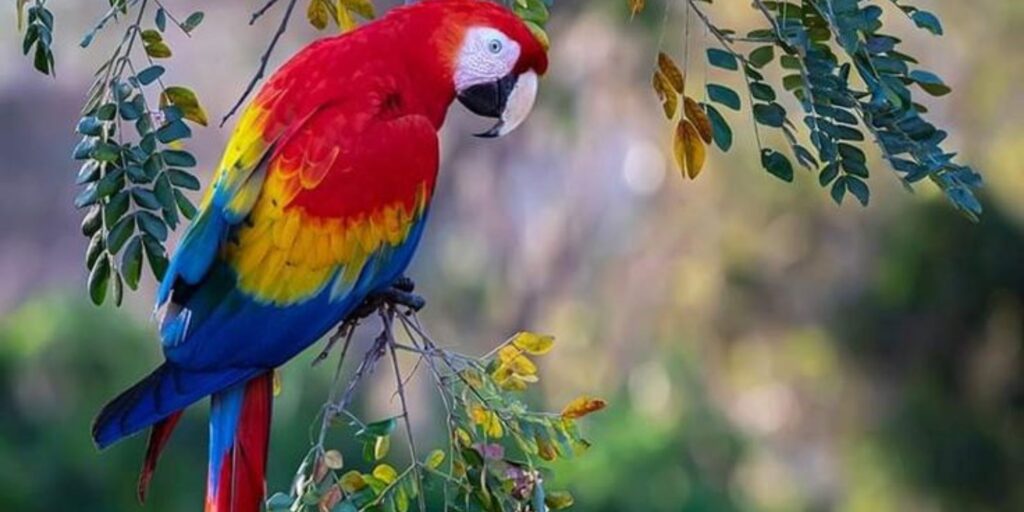Introduction
Tropical birds are among the most colorful and fascinating species in the avian world. Found in the lush, warm climates of tropical rainforests, islands, and savannas, these birds thrive in ecosystems rich with biodiversity. Species such as parrots, toucans, hummingbirds, and macaws are known for their vibrant plumage, which ranges from vivid reds and blues to bright yellows and greens. Their stunning colors are not only a visual marvel but also serve important functions, such as attracting mates and camouflaging in dense foliage.
Tropical birds are vital to their ecosystems, playing crucial roles in pollination, seed dispersal, and maintaining the balance of plant and animal life. For example, hummingbirds are key pollinators for many tropical flowers, while large fruit-eating birds like toucans help spread seeds that help regenerate forests. These birds have adapted to a variety of habitats, from dense rainforests to coastal mangroves, each with its own set of challenges and resources. Their unique behaviors, songs, and social structures also add to their allure, making them a favorite among birdwatchers and nature enthusiasts. The diversity and beauty of tropical birds highlight the importance of preserving these ecosystems for future generations.
The Vibrant World of Tropical Birds: A Colorful Journey Through Rainforests

Tropical birds are nature’s vibrant masterpieces, showcasing a stunning array of colors and patterns. Their striking plumage is not just for show; it serves essential purposes in communication, mating rituals, and camouflage. In the dense foliage of rainforests, these brilliant hues stand out against lush green backdrops.
Rainforests provide an ideal habitat for countless bird species due to their rich biodiversity. The humidity creates a perfect environment for insects and fruits that many tropical birds rely on as food sources. These ecosystems support everything from towering trees to undergrowth teeming with life, making them a haven for avian diversity.
Among the most famous tropical birds are toucans with their oversized bills that seem almost cartoonish. These unique beaks help them reach fruit high up in trees while also playing a role in attracting mates through visual display. Another captivating example is the resplendent quetzal, known for its iridescent feathers and long tail feathers that elegantly trail behind it during flight.
Vocalizations add another layer of vibrancy to this world. Many tropical birds have developed complex songs and calls that echo through the rainforest canopy. From melodious tunes to sharp squawks, each sound plays a crucial role in territory establishment and mate attraction.
Social behavior among these birds can be equally fascinating. Some species prefer solitary lifestyles while others thrive in large flocks where cooperation enhances survival chances against predators or aids in finding food sources more efficiently. Observing these interactions provides insight into their ecological roles within rainforests.
Migration also plays an integral part in the lives of certain tropical bird species. As seasons change or resources become scarce, some will migrate to different areas seeking better conditions or abundant food supplies—showcasing resilience amid changing environments.
Taxonomy and Evolution

Tropical birds are a fascinating subject in the realm of taxonomy and evolution. The diversity within this group is astonishing, with thousands of species spread across various families. Taxonomy helps classify these birds into hierarchical categories, from kingdom to species.
At the broadest level, tropical birds belong to the class Aves. This class encompasses all bird species on Earth. Within Aves, we find numerous orders that further break down into families and genera specific to tropical regions.
One notable order is Psittaciformes, which includes parrots known for their vibrant colors and intelligence. Another important order is Passeriformes, home to many songbirds found in tropical environments. Each family within these orders showcases unique adaptations suited for survival in lush rainforests.
The evolutionary history of tropical birds dates back millions of years. Fossil records suggest their ancestors roamed the planet long before humans existed. Over time, they adapted to different ecological niches presented by their rainforest habitats.
Factors like climate change and geographical isolation played significant roles in shaping their evolution. As continents drifted apart and climates shifted, some bird populations became isolated from one another. These separations led to speciation events where new species emerged over generations.
Gene flow between populations also influenced how traits developed among tropical birds. For instance, variations in plumage color often result from sexual selection—a process where certain traits become more pronounced due to mating preferences within a population.
Modern genetic studies have illuminated relationships among diverse groups of tropical birds previously misunderstood through morphology alone. DNA analysis reveals connections between seemingly unrelated species while highlighting convergent evolution patterns driven by similar selective pressures faced across varied environments.
Description of Tropical Birds
Tropical birds are renowned for their stunning plumage, which often features vibrant colors and intricate patterns. Their bright hues serve multiple purposes: attracting mates, signaling species identity, and providing camouflage among the vivid foliage of rainforests. The vivid reds, blues, yellows, and greens create a visual spectacle that captivates both birdwatchers and casual observers alike.
These birds come in various shapes and sizes. From the tiny hummingbirds flitting about to large macaws gliding gracefully through the canopy, tropical avifauna showcases incredible diversity. Each species has adapted uniquely to its environment. For instance, some possess long tails that help them navigate through dense branches while others have stout bodies designed for seed-eating.
Their beaks also vary dramatically in size and shape based on their diets. Some tropical birds boast long, curved bills perfect for extracting nectar from flowers or probing into tree bark for insects. Others feature powerful jaws ideal for cracking open hard seeds or fruits found high up in trees.
Behaviorally speaking, many tropical birds exhibit fascinating social structures within their flocks. Some species are highly gregarious; they thrive in communal settings where they share feeding grounds or engage in elaborate courtship displays together. This cooperative behavior enhances survival rates against predators lurking nearby.
Communication is another critical aspect of tropical bird life. They utilize an array of sounds—from melodious calls to sharp screeches—to convey messages ranging from warning signals to mating invitations. These vocalizations add layers of richness to their rainforest habitats as they echo amidst towering trees.
Nesting habits also differ significantly among these colorful creatures; while some build intricate nests hanging precariously from branches using twigs and leaves, others may simply carve out cavities within tree trunks or take advantage of abandoned nests left by other animals.


